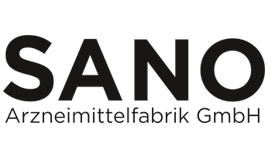What is gout?
Generally speaking, gout is a metabolic disorder during which the levels of uric acid in the bloodstream are elevated. It can be congenital or triggered by certain factors. Elevated levels of uric acid in the bloodstream can result in uric acid deposits. Severe joint pain is one typical symptom of an attack of gout, often occurring in the big toe.
In other words, it centres around uric acid
Healthy people also produce uric acid. It is created whenever cells are broken down or when uric acid is produced when digesting food. Uric acid is then excreted in urine via the kidneys.
In the case of congenital gout (the vast majority of cases), it is caused by a congenital metabolic defect.
- Uric acid excretion is impeded. The kidneys excrete less uric acid than is needed. This is also called hyperuricaemia. Uric acid levels in the blood continue to rise.
- In very rare cases, the body produces too much uric acid.
Uric acid is produced when compounds known as purines are broken down. Purines are key components of DNA, the cells’ genetic material.
- Food derived from animals contains a lot of purines.
- On the other hand, purines are also a normal component of your body’s cells. Therefore, in organisms, purines are also released whenever cells are broken down or collapse.
Occurrence of complaints
Elevated uric acid levels alone would not be a problem for your body. However, uric acid can form acicular, or needle-shaped, crystals which can be deposited in joints and kidney and lead to extremely painful inflammation.
These needle-shaped crystals form particularly where your body temperature is low, i.e. in your toes and fingers and frequently in your knees. Your body responds to them as to foreign bodies, with an inflammation, so that the affected joints swell up, and feel hot and painful.
If this inflammation process remains untreated and lasts long enough, tophi can form on the affected parts. These are encapsulated uric acid deposits which restrict joint movement. In addition, the articular cartilage suffers from the inflammation and increasingly disintegrates.
Source: Mutschler: “Arzneimittelwirkungen- Lehrbuch der Pharmakologie und Toxikologie”, 9th edition

